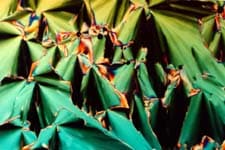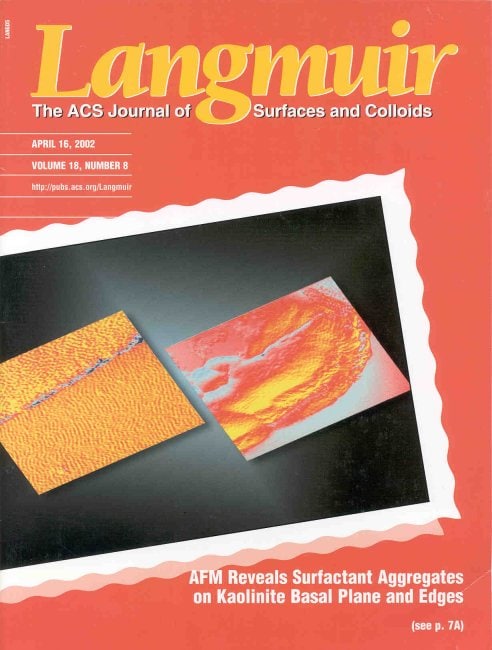Small-Angle Neutron Scattering (SANS)
We use SANS to examine the structure of surfactant systems on the molecular and nanoscopic scale. SANS experiments are carried out at major research facilities including the Institute Laue-Langevin, Grenoble; National Centre for Neutron Research, Gaithersburg Maryland; Oak Ridge National Laboratory, Oak Ridge, Tennessee; Hahn-Meitner Institute, Berlin. The scattered intensity is collected as a two-dimensional detector pattern and contains information about solution structure. Quantitative analysis of the scattering pattern reveals details such as aggregate size, shape and spatial organization.
Optical and FTIR Microscopy
Polarised light microscopy is used to identify different liquid crystal structures by characteristic optical textures. We combine this with penetration or flooding experiments to create a concentration gradient and rapidly scan all possible liquid crystals, as well as FTIR microscopy to determine compositions of the phases formed.

Spectroscopic Probes
Molecules with unique spectroscopic signatures are used to learn microscopic information that is not accessible to other techniques. For example we can learn the microscopic polarity absorption or emission characteristics of a solvatochromic dye dissolve dinto a micelle or surfactant film. Tlis is often detectable simply form the color of the solution.
Differential Scanning Calorimetry (DSC)
Rheology
The flow behaviour is not only important for practical applications in processing and end-use of surfactants phases. It also provides an important window into the dynamics and even the structure of these phases. Rheological investigations are undertaken in collaboration with and using facilities in the Department of Mechanical and Mechatronic Engineering.
Atomic Force Microscopy (AFM)
The AFM is a revolutionary tool for studying the structure of surfactants adsorbed onto solid surfaces. We are using AFM imaging to detect and characterise surface aggregates only a few nanometers in diameter, and to show how these structures change when the surface or solution conditions are changed.

Neutron Reflectometry (NR)
NR can be used to measure the thickness and concentration profile of an adsorbed surfactant at an interface, by measuring the intensity of a specularly reflected neutron beam as a function of incidence angle (Qz). It is the only technique with resolution similar to AFM, but in the direction normal to the surface. We use NR to examine surfactant adsorbed layers at solid/solution interfaces to complement AFM and to reveal additional details of adsorbed layer structure. NR also provides details of solution structure near the surface through off-specular reflected and scattered neutrons (at Qx ¹ 0.).
Adsorption Isotherms
An adsorption isotherm is the classical way of characterising how a surfactant adsorbs onto a solid, and how much is adsorbed at a particular concentration. We have developed a versatile chromatographic (HPLC) method to study adsorption of a wide variety of surfactants, surfactant mixtures and surfactant solutions with additives, enabling us to complement AFM, NR, and other experiments with thsi important tool.